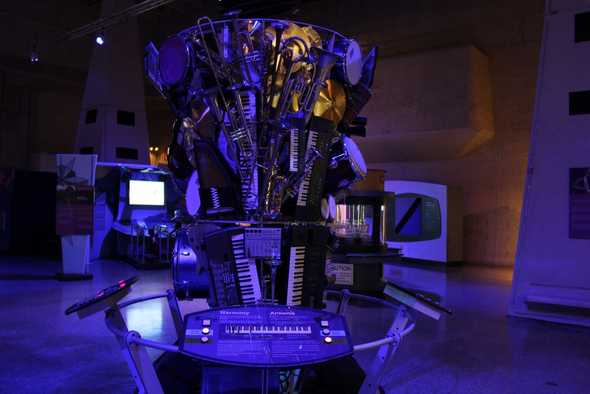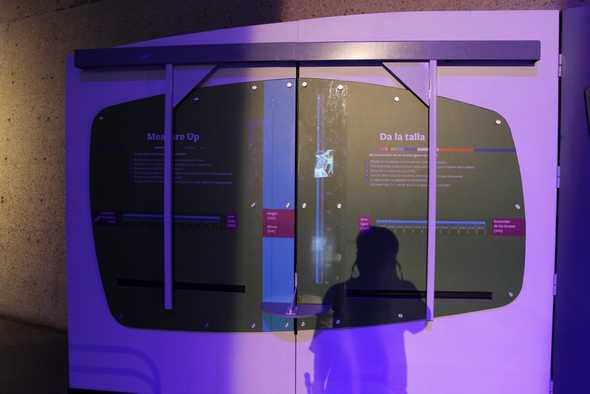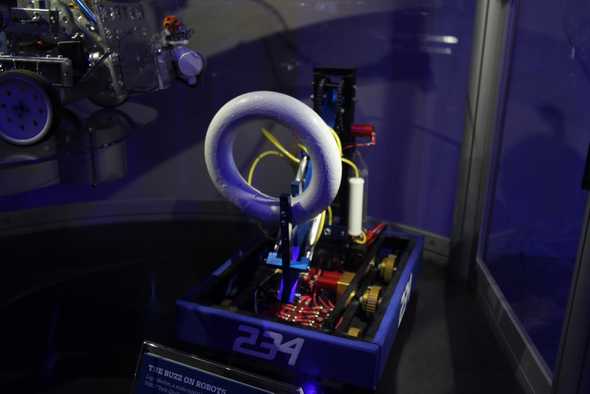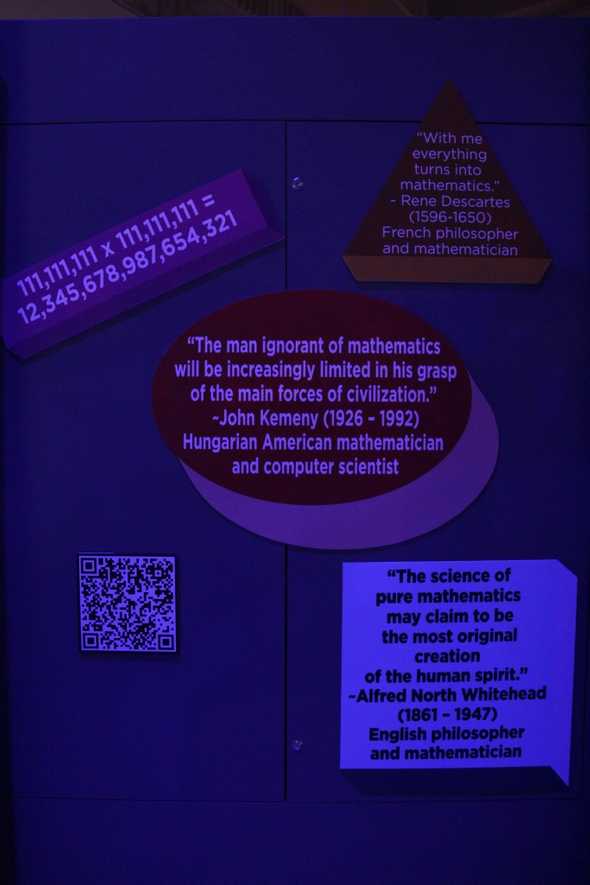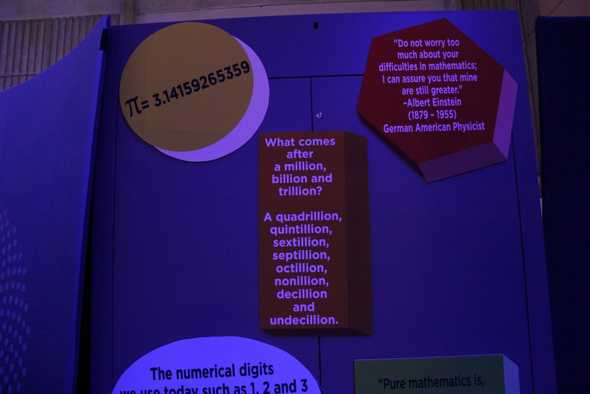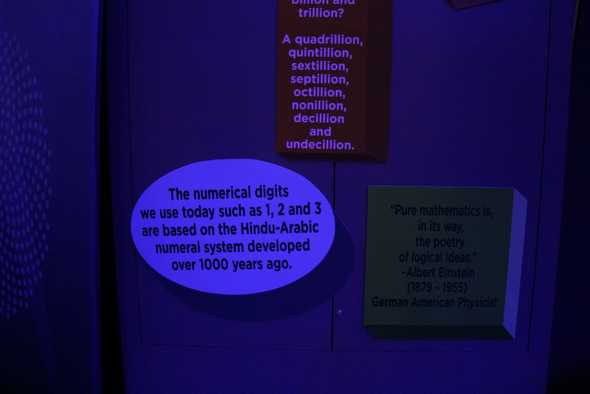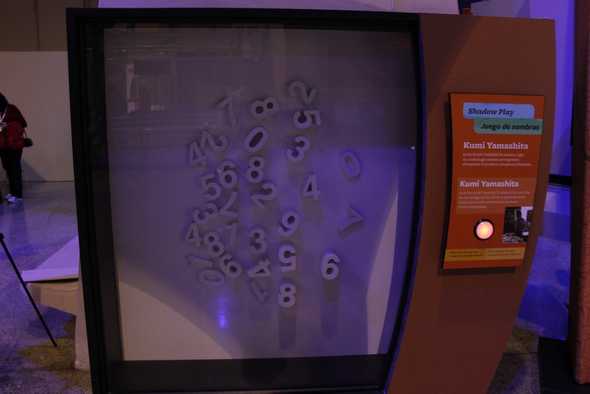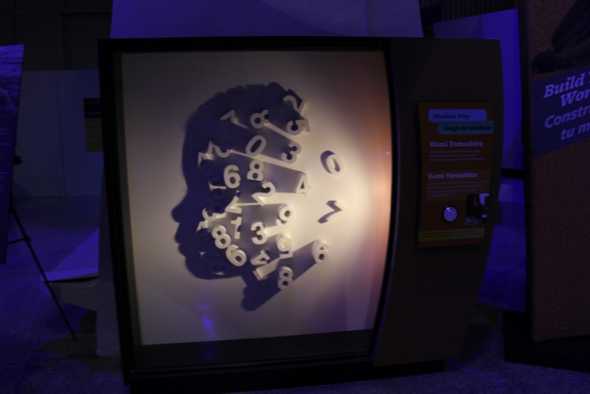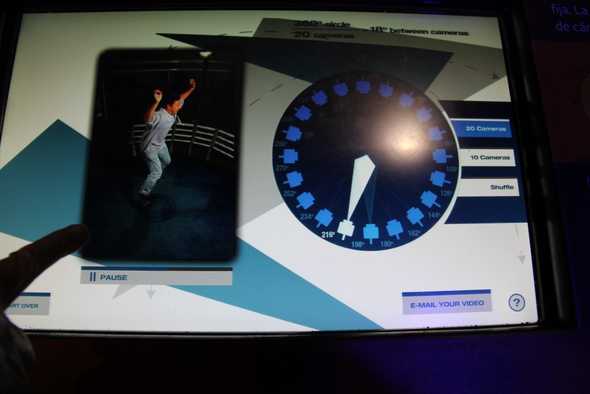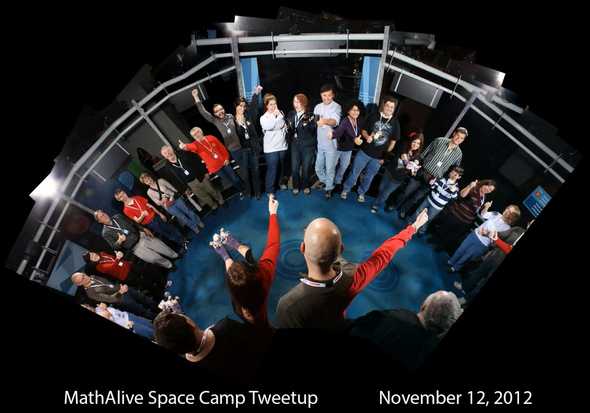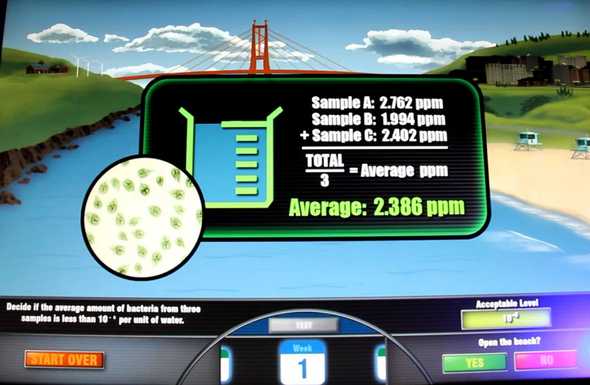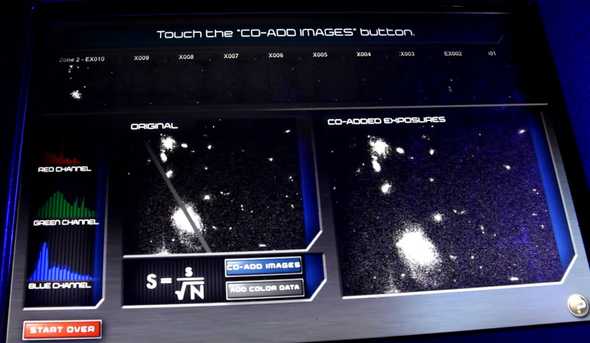Raytheon's MathAlive! Exhibit
At the MathAlive! Space Camp tweetup in Huntsville, tweetup attendees got an opportunity to play around in the MathAlive! exhibit presented by Raytheon. The 5,000 square foot exhibit contains nearly 40 unique, interactive experiences that take math from its native form into the applied worlds of design, engineering, technology and science.
The first station I went to explained how music is made through fractions. A note on a keyboard has a fundamental frequency, or pitch, that determines if a note sounds high or low. Frequency is measured in hertz and is based of vibrations per second. Double the hertz of the frequency of a note and the pitch is one octave higher. Divide it by two and the pitch is one octave lower.
Another station measured your height and the length of your arm span. The two lengths on average can be about the same. Adjacent to the measurement, there was a graph where you could add your data point, teaching visitors how to graph data and see common patterns.
On display are some robots built by Whittier Middle School Girls Botball Team from Norman, Oklahoma; FIRST Tech Challenge robot by Team 178 Enforces from Roman High School in Farmington, Connecticut, winners of the Inspire Award; and Logo Motion, a scale model by Cyber Blue High School FIRST Tech Challenge Team 234 from Indianapolis, Indiana.
Along another wall of the exhibit were quotes and mathematical equations.
The Shadow Play station had me momentary baffled. Artist Kumi Yamashita shines a light on a seemingly random arrangement of numbers to produce unexpected shadows. What do you see?
By far the most entertaining station was the 360 degree photo ring. Using 20 digital cameras spaced evenly around a circle, you can strike any pose you want. The exhibit produces a short video that you can email home showing a circular view of your pose. Using another opportunity for a little math, there was even a math equation of 360 degree circle / 20 cameras = 18 degrees between each camera.
So what happens when 19 MathAlive! tweeps get into the ring? A group photo that still amazes me on how it was even possible to accomplish.
Other stations included teaching visitors about the binary system, the Fibonacci series in nature, how to design a skateboard or carriage to meet certain requirements in physics and engineering, and how beaches are closed when runoff that contains too many microscopic parasites contaminate them and are measured until bacteria counts are less than a specified parts per million value.
Visitors get a chance to learn how the Hubble Space Telescope can capture such amazing pictures. To get rid of what is called “visual noise,” the telescope takes dozens of long exposures and co-add the images. By averaging all the visual data together, if a grainy spot in one exposure isn’t in another, it is removed. A bright spot in all the exposures becomes sharper in the process.
The exhibit is now open through February 2nd, 2013 at the U.S. Space & Rocket Center in Huntsville, Alabama.

